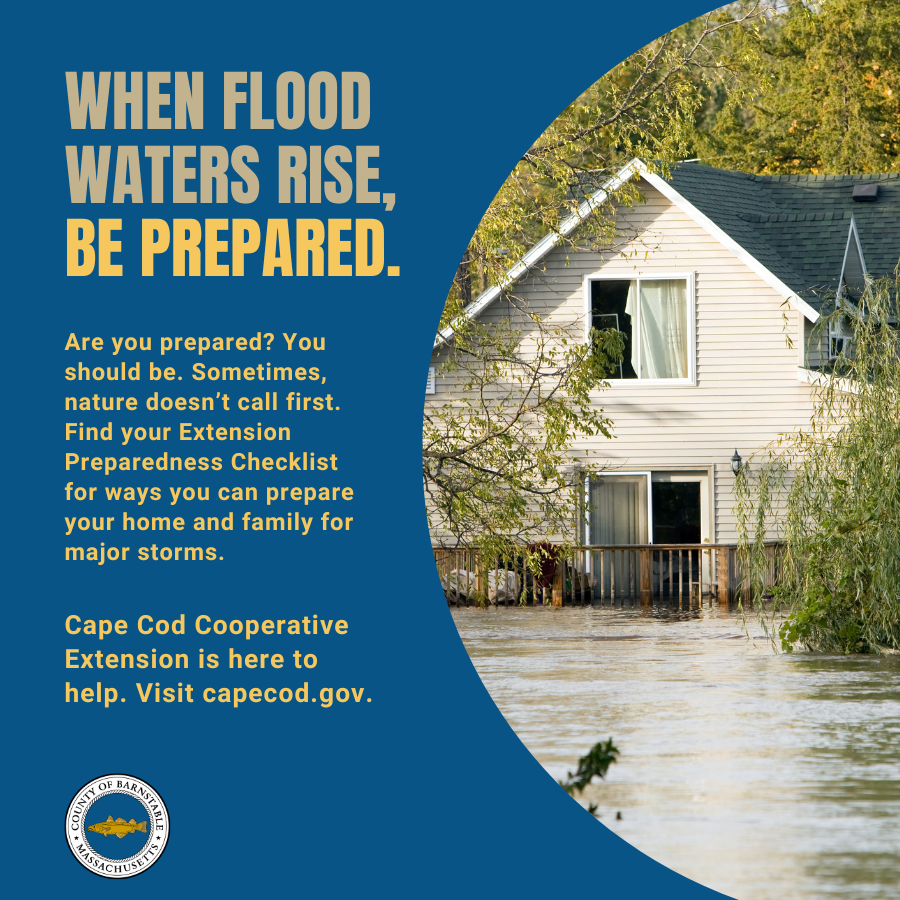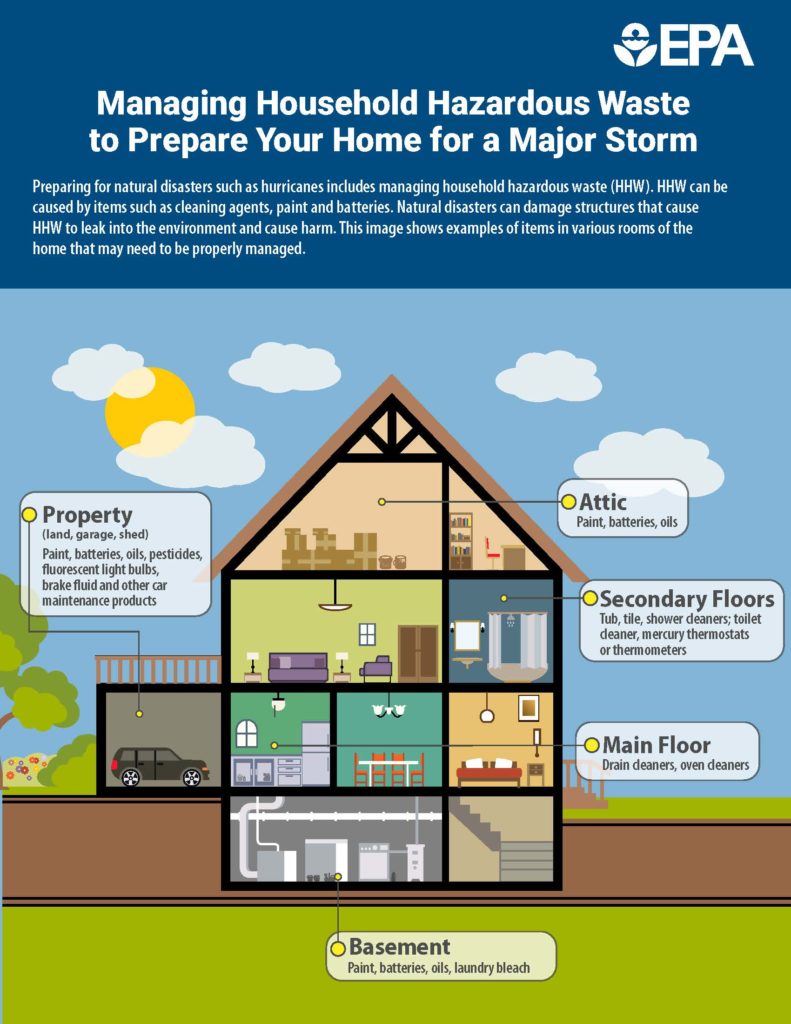
Plan Ahead, Be Prepared to Weather Storms and Disasters

Storms on Cape Cod can range from hurricane winds, to freezing rain and ice, to blinding wind-driven snow that can last several days. In addition to precipitation, storm surges can cause massive flooding and submerge coastal areas, including homes and streets.
Why Prepare?
Extreme weather can shut down an entire region. It can lead to flooded, homes, communications disruptions and power outages. Make sure you and your family are ready. By taking certain necessary steps, residents of Cape Cod can help build resilient communities, reduce injuries and deaths, and minimize the economic impact of disasters and other types of emergencies.
Protect Your Home.
Your home is one of your greatest financial investments. It is a place that shelters you, your family, and most of your possessions from the elements of nature. Yet coastal storms, floods, high winds, and tornadoes can threaten the inhabitants and contents of your home.
You can prepare for flooding now by taking a few easy steps:
Find out if you are in a flood zone prone to coastal flooding. These zones only have a 1% chance of flooding in any given year, but a 26% chance of flooding over the 30-year life of a mortgage. Visit msc.fema.gov and enter your address.
Purchase flood insurance. Your homeowners insurance probably does not include flood coverage. Even if you do not live in a designated floodplain, your home can be damaged from rainfall flooding. Visit floodsmart.gov for more information.
Extension’s Coastal Processes Agents collaborated with Woods Hole Sea Grant to bring you the Massachusetts Homeowner’s Handbook to Prepare for Coastal Hazards. This free handbook was created to help you prepare for natural hazards so that risks to family and property may be reduced. While it is never possible to eliminate all damage from a natural disaster, you as a homeowner can take action and implement many small and cost-effective steps that could significantly lower your risk. Click Here to Download the Massachusetts Homeowner’s Handbook to Prepare for Coastal Hazards.
Protect Your Family and First Responders from Household Hazardous Waste.
Many chemicals, materials, and products commonly found in the home are toxic and can be harmful to your health and our environment. These are called Household Hazardous Waste. Products, such as oil-based paints, cleaners, and pesticides can contain hazardous ingredients and require special care when you dispose of them or when you decide to store them in your home. Some leftover household products can react or explode under certain circumstances, such as a flood or fire in your home due to a storm. This situation can endanger your family as well as police, fire, and rescue teams who would be responding to emergencies during storms. To get rid of these leftover or unused chemicals, you can dispose of your household hazardous waste during Barnstable County’s Household Hazardous Waste Collections that take place from spring to fall. Click here for your town’s brochure and event schedule during collection season. During the off-season you reach out to Kalliope Chute, Extension’s Hazardous Materials Environmental Specialist, at #508-375-6699, kalliope@capecod.gov for info on safely storing or disposing of your household hazardous waste. You can also click here to visit the Household Hazardous Waste webpage for resources and information.
If you decide to store hazardous products in your home follow best management practices according to safety data sheets or labels. For example, store chemicals above potential flood levels but never above eye level. Store poisons and toxic substances so children and pets cannot access them. Store ignitable or flammable materials in flame-retardent containers, such as metal garbage cans with lids to reduce oxygen access. Check with your local fire, health, or emergency preparedness coordinator for more information. Check for hazardous products around your house and make note of your storage locations. This map can help you take an inventory of storage locations around your home.

Prepare Your Family with a Plan.
Some emergencies can force you to evacuate from your neighborhood or confine you to your home. It is important that you know what to do if basic services–water, gas, electricity or telephones–were cut off by utility company. It is essential to have a disaster supplies kit that includes basic items from your home that you may need in case of emergency. Your plan should include:
- Disaster Kit Contents
- Make a Plan
- Family Emergency Plan and Communication
- Financial Preparedness
- You Are The Help Until Help Arrives
We’ve seen the power a storm can carry, and the devastation it leaves behind. Prolonged power outages and flood damage are two of the biggest risks to your food. Fortunately, a plan can help keep you and your family safe from foodborne illness. This includes knowing the proper food safety precautions to take before, during, and after a power outage — and being prepared to safely handle food and water in the event that flooding occurs.



